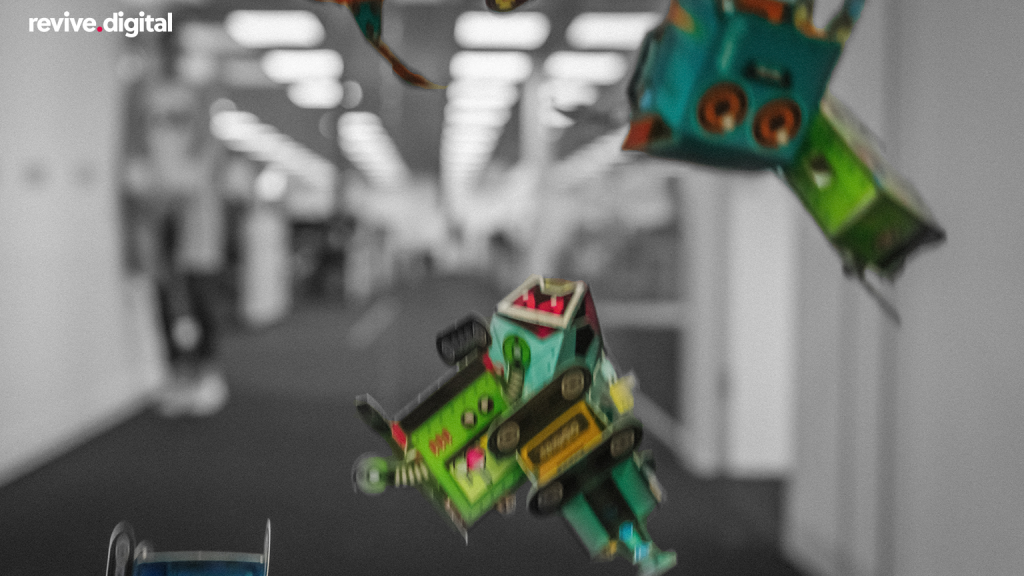AI in Marketing. Do the Robots Come in Peace?
You assume this blog, AI in Marketing, was written by a person. But in reality you probably won't know if what any of what you've read online today was written by a machine or a human. Maybe you won't care. 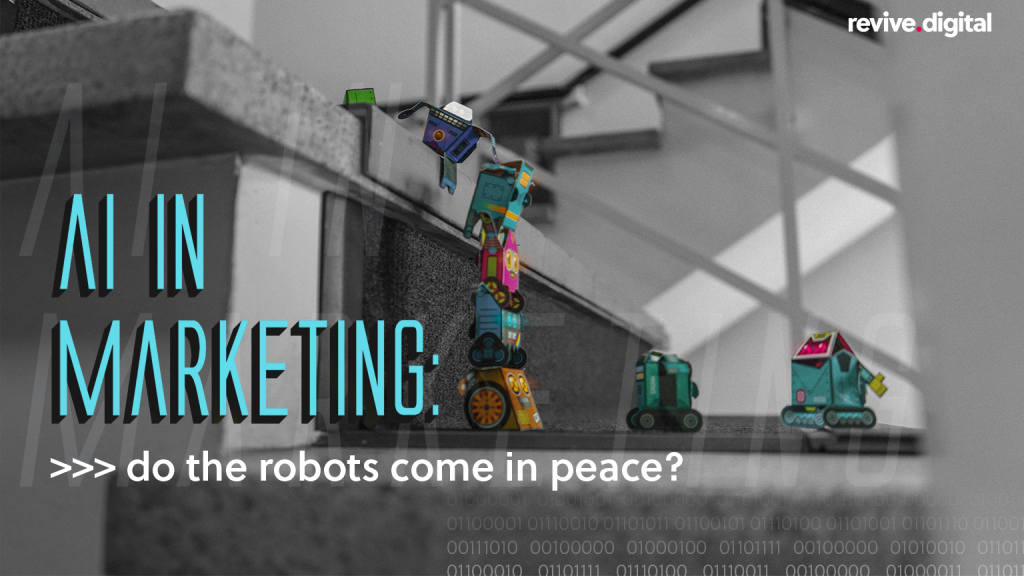 Machines write millions of articles a year, producing them in a fraction of the time it takes a human journalist to write just one piece. Humans need rest. Computers don’t. Plus the machine will learn and improve, whereas a human will go home after work and worry that the kids' budgie is 'looking a bit peaky'. But why is all this important?
Machines write millions of articles a year, producing them in a fraction of the time it takes a human journalist to write just one piece. Humans need rest. Computers don’t. Plus the machine will learn and improve, whereas a human will go home after work and worry that the kids' budgie is 'looking a bit peaky'. But why is all this important?
Because content produces advertising opportunities
However, the sheer amount of ‘stuff’ out there now means people just don’t have the capacity to read everything that’s being thrown at them, content-wise. If you run a business, you really have to create affinity for your brand.
But a time will come when you just won't be able to compete in business without using artificial intelligence or AI in your marketing. In this article:
-
AI – You’re Already Living with It
-
Is It A Bird? Is It a Plane? No, It's Super Intelligence
-
Understanding What Artificial Intelligence Actually Means
-
Benefits of Using AI in Marketing
-
Clustering Customer Behaviours
-
More Day to Day AI in Marketing
-
Natural Language Processing and Content Marketing
-
AI Content Creation Systems – The Robo Journalist
AI in Marketing – You’re Already Living with It
Today, probably like most days, one of the first things you did was to look at your phone. Then you checked your messages. Perhaps you replied to one or two and used predictive text. You’ve only moved your arm and AI is already part of your life. It was working for you while you slept. It’s like this… If your phone opens using facial recognition software or uses a fingerprint, it’s AI in action. If your emails are filtered for spam, it’s AI in action. Predictive text is part of a branch of AI called ‘Natural Language Processing’. It’s everywhere you are. And you probably don’t even realise it:
-
Voice Search
Personal assistants like Google, Siri and Alexa all use language processing to learn what you want. Natural language processing is a huge area of AI.
-
Retargeting
Ever been chased across the internet by an advert? It’s all AI when you search for a product on one site and the product follows you around different sites.
-
Social Media
Facebook and LinkedIn (as examples) use AI to decide who is shown to you as a potential friend or connection.
-
Ecommerce
Amazon’s ‘collaborative filtering’ uses AI to decide which products other people also bought and display them for you during your visit. It’s a great upsell technique.
-
User Experience and Target Audience
By analysing hundreds of data areas, such as demographics and device type, AI can display the best-fitting offers and personalise the content for your website’s users. 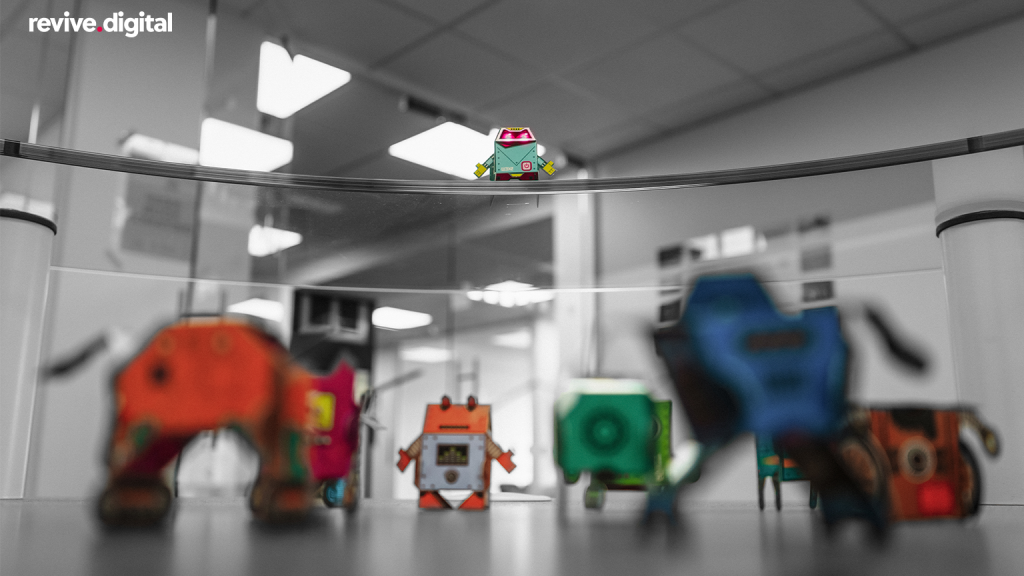
Is It A Bird? Is It a Plane? No, It's Super Intelligence
In 2015 ad agency Saatchi and Saatchi created what was the world’s first digital ad. The concept was that an advert could read the reactions of its audience (using a Kinect device) and use the data to refine the right message and images from a pool of combinations. Combinations that didn’t work were eliminated. Some of the ad messages the machine threw back were described as ‘weird’, but chances are it’s just the start of something that will be super-slick in a decade. These types of things just cannot be done by people and deliver the same levels of service. At some point in the future (and no-one agrees when) a super intelligent computer will supersede humanity. It will learn, without fatigue. As it learns it will evolve. It took us hundreds of thousands of years to get here. It will take a super intelligent computer maybe just hours to evolve to a computation level that’s the same as the difference between humans and insects. This time, humans will be the insects. Or make us immortal. And the computer won’t stop learning. What is known is that historically 99% of earth’s species have become extinct. To the natural world, humans are just another species. 
Understanding What Artificial Intelligence Actually Means
The earlier examples are all forms of ANI – artificial narrow intelligence. ANI is an artificial intelligence that focuses in one area, a specific action. Think Spotify giving you playlist suggestions or a television programme site showing recommendations for other shows you might like. If your bank sends you a balance alert it’s ANI and if that transaction is considered as unusual, it’s likely to be ANI powered. The different stages of AI are often broken down into these three groups:
ANI – Artificial Narrow Intelligence
This focuses on a single area of artificial intelligence, Google Translate for example.
AGI – Artificial General Intelligence
AGI is AI that’s equal or better than human intelligence. It’s a computer or machine that is as intellectual as a human.
ASI – Artificial Super Intelligence
A thinking machine that can outperform humans. From a computer that’s a little smarter to one that’s trillions of times ahead of us in the intelligence stakes. The implications for humanity are unknown. It would make us the equivalent of ants. It’s the time between the jump from AGI to ASI that’s important. It might only be a few weeks. Or faster. It’s known as ‘the singularity’ and means the point that advances happen quicker than humans will understand them. The machines are in the driving seat. And it will make The Jetsons look like a cartoon created by the predecessors of cavemen. If you want to know more about the growth of Artificial Intelligence and its implications for the future, you should check out Tim Urban’s brilliant two-part series The AI Revolution. The Road to Superintelligence. You’ll be introduced to the Die Progress Unit (DPU), which is great in itself. It’s a brilliant read and was cited by Elon Musk on Twitter.
Benefits of Using AI in Marketing
AI in marketing is in the early stages. But it’s only going to become more and more advanced. And more ingrained in the marketing strategy for most businesses, large or small. This rise of technology has seen the advent of deep learning and big data. Machines can cluster data points in a way no human brain could (or at least in a fraction of the time a human could). This allows your marketing team or business to get super focussed and produce a strategy based on those patterns of data. Though, if you’re running a small business, you may think using AI in marketing is not relevant to you. But this digitisation allows you to compete with bigger rivals. It helps you, say, compete on PPC and Paid Search, while you are busy keeping the wheels moving. You might have to check it once a day, but you won’t have to spend hours and hours optimising campaigns (at least in the early stages anyway). In ecommerce buyers search for a variety of products. AI means you can retarget those potential customers across Facebook or other web pages. Targeted ads are a more efficient way to target your most receptive prospects. AI enables improvements in your business’s efficiency too:
- Increased ROI
- Better campaign tracking, reporting and analysis of campaigns
- Improved searches, which help you understand where to focus your efforts
- You can deliver personalised content
- You’ll become more efficient as machines crunch data, freeing up your staff’s time to focus on more important things
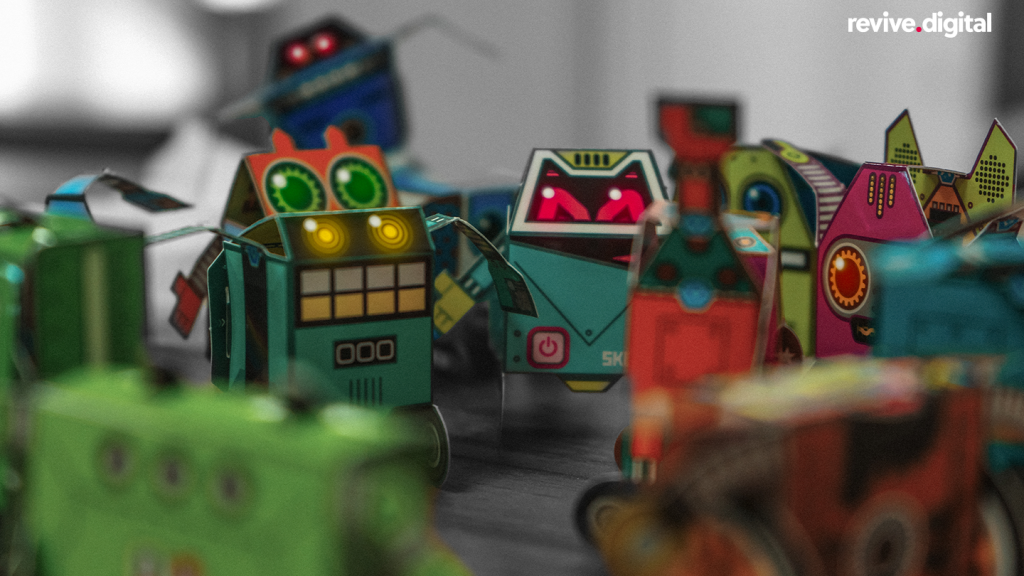
Clustering Customer Behaviours
Swedish computational linguist Jussi Karlgren had been developing the idea of clustering customer behaviours, known as Recommender Systems, since the 1990s. The notion was that you could predict a person’s future behaviour or buying preferences based on their demographics and what clusters of other similar customers had bought. These AI powered systems constantly adapt to a person’s likes and dislikes when they visit websites. In the late 1990s Amazon introduced ‘Collaborative Filtering’, which based its machine learning algorithms on item data, rather than personal data. It changed the way we shop online. (On a side note; in 2013 Amazon won an Emmy for its recommendations through Amazon Instant Video.)
More Day to Day AI in Marketing
Some of the biggest areas where your business is probably already focussing activity include SEO, Content Marketing and Emails. If you have a customer service department you might be using a chatbot. AI means you can easily optimise, personalise and automate-ise.
The New SEO
It’s possible the traditional idea of backlinks and keywords could have far less relevance in a world of AI driven marketing. Google’s Rankbrain algorithm changed things. Historically when Google tweaked its algorithms it was a manual job, done by engineers who monitored what people were searching for. Rankbrain is machine learning that tweaks the algorithm by itself. RankBrain will look at the keyword and assess the importance of backlinks, the length and freshness of content, the site’s domain authority and other bits that affect ranking. If Google’s users like the tweaked algorithm better, it’s kept. If not, RankBrain brings back the old one. And it continues learning. User activity will become more important.
Really Personal Emails
Sending emails offers huge potential in the AI world. And it goes way beyond just automation. Imagine being able to personalise every single email to a customer based on past behaviours and interactions with your business? Imagine if a customer visits products A, B and C and you can then send them a piece of content followed by recommendations of what similar users bought... AI makes this possible. And AI can customise this at scale.
Chatbots
“where is my order please… ??” Chatbots are already being widely used as a customer service tool, trying to replicate as closely as possible the way a human operator would talk to a customer. For many people that’s key. Although it’s not known yet whether us mere humans care if a bot answers us or not (as long as we get the answers we want). They can be used as personal assistants too, helping gather data and delivering it in real time through messaging platforms. 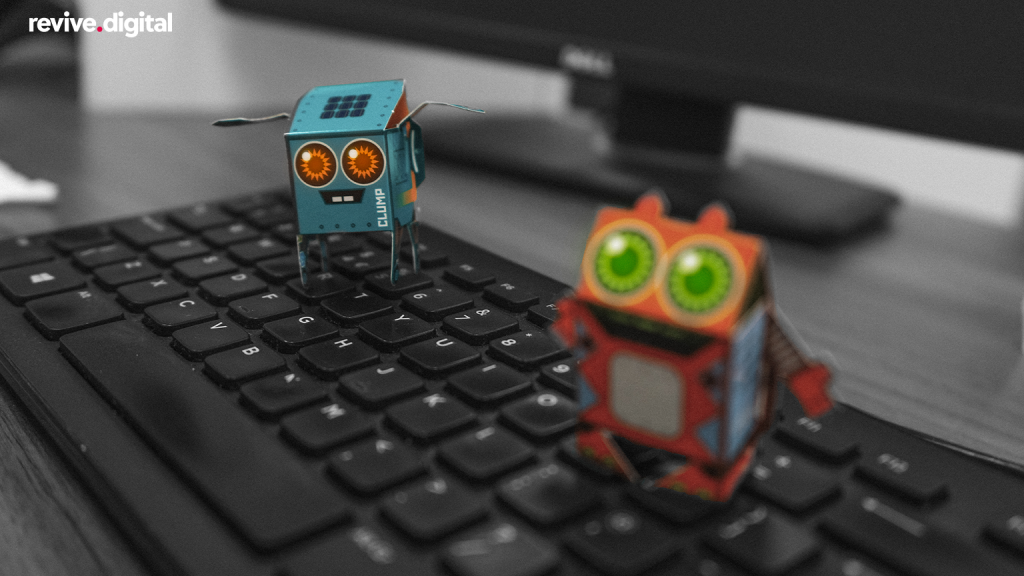
AI in Marketing - Natural Language Processing and Generation
Natural Language Processing (NLP) is a huge part of our daily lives… … searching on Google, grammar and spell checkers, predictive text, the marketing campaigns you receive, Alexa, Siri, chatbots, predictive text, searching within a website, autocorrect, autocomplete… … it’s all NLP driven. The aim of NLP is to understand and make sense of our languages and produce something that we can use. Machines take raw language and using algorithms alongside computer linguistics they learn to interpret what we are saying… …you need to get in touch with your pal Mervyn Tallos. You say:
“Siri, text Merv Tallos.” Siri acknowledges it, reads the message back and sends it."
Another part of this evolution is Natural Language Understanding (NLU). As its name implies this looks at the intent behind the words – what is a searcher actually looking for? When you have things like dialects and slang, understanding this intent is hugely complex. Imagine a machine that could detect sarcasm or distress by an inflection in the tone of someone’s voice, or by the context of their written words?
AI and Content Marketing
You’ve probably noticed that there’s a lot of content out there and some of it is not much use (‘thin’ is how it’s described in the biz). It’s written with keywords not customers in mind. But content offers advertising opportunities. And advertising gets businesses customers. This need to create content has led to some major advancements in data analysis, but also in the way that data is presented. The field of text analytics is used to look at raw text. It counts, groups and categorises that text to get structure and meaning from large volumes of content. And it goes hand in hand with natural language processing. Most NLP techniques rely on machine learning to find meaning from human language. Chatbots, predictive text and social media listening and sentiment analysis, are some of the marketing applications that use NLP. It’s even used to identify patterns in text to help detect and solve crimes. When a chatbot responds, we’ve entered the field of Natural Language Generation or NLG. The machine takes the processed data and creates a natural sounding response to your query. 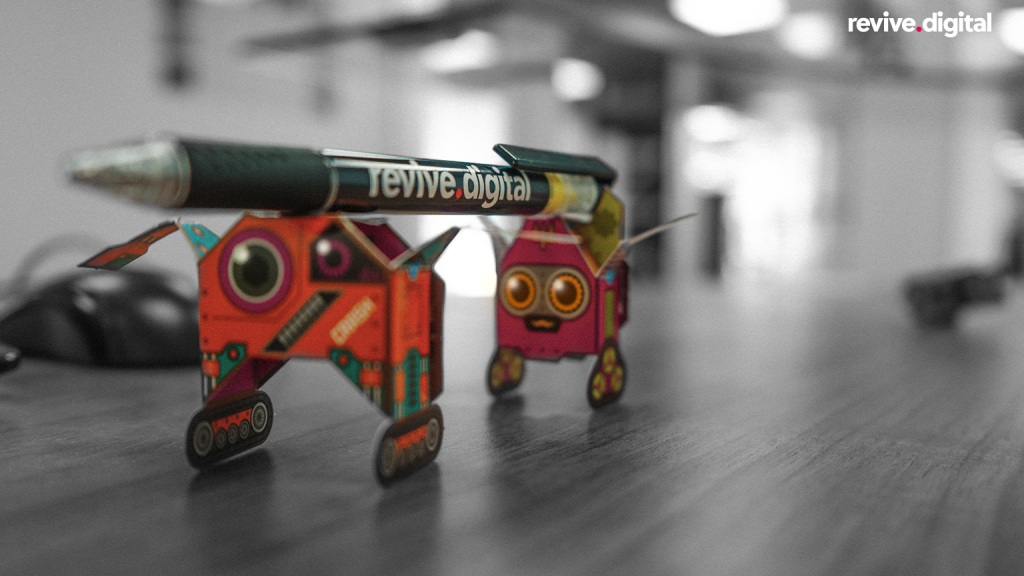
AI Content Creation Systems – The Robo Journalist
Many major publications, particularly in the financial sector, use machines to generate articles. You’ve probably read some and thought it was written by a person. The aim with AI systems is to help interpret reams of data then produce a report or summary that reads like a person wrote it. The human journalists can use the information to help their own reports. It’s also the case where the AI is actually producing entire reports for publishing. It’s particularly useful in data driven industries where a human might spend days poring over data to get one bit of analysis. In 2014 Automated Insights released Wordsmith, the world’s first public natural language generation platform. Wordsmith can generate human-like copy from huge amounts of data, producing millions of reports and articles in just a short time. These systems help scale content in a more efficient way, and one that can be personalised too. Wordsmith produces at least 1.5 billion articles a year. And in 2014 Associated Press announced it would be moving it’s content creation to Wordsmith. But Wordsmith isn’t the only NLG robo out there:
- Washington Post uses Heliograf
- Forbes uses Bertie
- Bloomberg uses Cyborg
The Financial Times, The Guardian and Reuters also use machine learning content management systems. Does it mean journalists will be a thing of the past? Maybe, maybe not. But they’ll definitely have to rethink how they do their job. And can you tell if it’s a bot or not? Why not test your robo-writer spotting skills here at Bot or Not?
Final Thoughts
If you’re a huge multi-national corporation, AI is probably already doing wonderful things for your marketing and business. The robots can tell you how many cornflakes your best customers have in their bowl each morning. Your global domination marches on… And if you’re a small local business technology allows you to compete with the big guns above. But until super intelligent computers make us mere ‘human beans’ extinct, using AI isn’t about having robots run everything for us. It’s about understanding how machine learning works to your advantage. Take advantage of the robots at Revive. Because data can be interpreted in many ways, and you want the data you have to support your marketing, not become overwhelming. So, get in touch and let us get overwhelmed for you (oh dear… a robot would never have said that).
Are you using the latest technology to your advantage?
